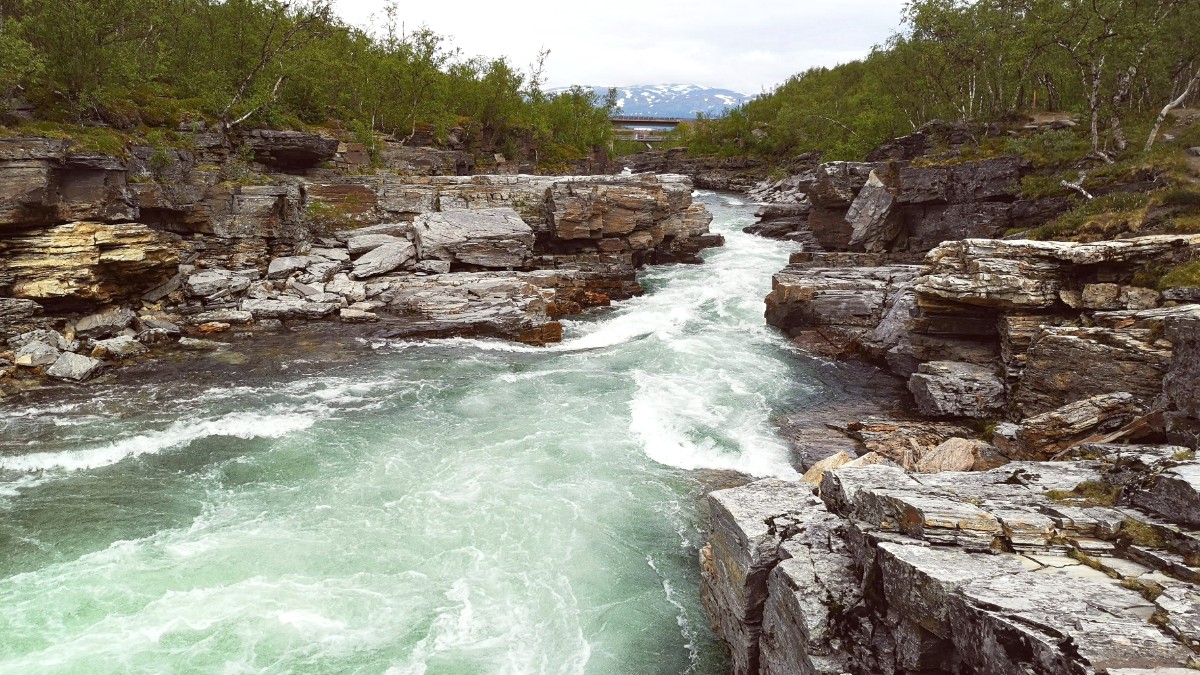
Norrland, Sweden
The region experiences a subarctic climate, with significant variations between seasons.
The region experiences a subarctic climate, with significant variations between seasons.
Expect cold conditions, typically ranging from -5°C to -25°C (23°F to -13°F). Temperatures fall lower, notably in January and February. Precipitation mostly snow, forming deep blankets. Air remains relatively dry.
The polar night period occurs from early December to early January, with the sun below the horizon. Daylight gradually increases thereafter. This darkness is main for Northern Lights viewing.
Mild temperatures, ranging from 5°C to 20°C (41°F to 68°F). Cooler temperatures occur, especially at higher elevations or during rain. Moderate rainfall.
The Midnight Sun brings 24 hours of daylight from late May to mid-July. This means no darkness for several weeks.
Temperatures cool steadily, from 5°C to -10°C (41°F to 14°F). Early snowfalls occur. Precipitation increases, with a mix of rain and snow.
Daylight decreases rapidly. Darkness returns, welcoming Northern Lights viewing once again.
Winter Peak (Dec - Mar): Optimal Northern Lights chances, winter activities. Very cold, limited daylight. Higher prices.
Summer Peak (Mid-Jun - Mid-Aug): 24 hours daylight, extensive hiking. No Northern Lights, mosquitoes. Trails are muddy.
Spring Transition (Late Mar - Apr): Daylight expands. Snow conditions stay good for some winter activities. Potentially fewer crowds than peak winter. Variable weather.
Autumn Transition (Sep - Oct): The landscape offers beautiful autumn colors. Good chances for Northern Lights viewing as darkness returns. Fewer crowds than peak summer or winter. Weather unpredictable, with rain or early snow. Some services may have reduced hours.
Lowest prices for accommodation and tours.
Very few tourists visit during these times.
Often unfavorable weather conditions.
Melting snow or muddy trails make hiking difficult.
Limited services and activities are available.
Sweden is part of the Schengen Area, which simplifies travel for many nationalities.
Different nationalities have varying entry rules.
Have specific papers ready for entry.
Abisko National Park generally does not call for special permits for tourism. Visitors enter freely.
Certain activities, however, do need official permission. This applies to drone flying, where local regulations apply. Hunting and fishing activities also need specific licenses obtained from local authorities or licensed vendors.
Check local regulations for drone use; some areas may restrict or call for permits. (`fa-drone`)
Specific licenses from local authorities for any hunting. (`fa-crosshairs`)
Obtain necessary licenses from authorized vendors for fishing. (`fa-fish`)
Abisko National Park has no general entry fees. (`fa-tree`)
Standard Schengen entry protocols apply at all ports. (`fa-passport`)
Abisko can be an expensive destination, reflecting Sweden's generally high cost of living. Careful budgeting manages expenses effectively.
The official currency is the Swedish Krona (SEK). Exchange rates vary.
Credit and debit cards are widely accepted, often preferred over cash. Visa and Mastercard are dominant. ATMs are limited in Abisko itself, with one at Abisko Turiststation.
~$40-$110 USD/day
300-600 SEK
150-300 SEK
0-100 SEK
0-200 SEK
~$160-$370 USD/day
800-1500 SEK
400-800 SEK
100-300 SEK
500-1500 SEK
~$480-$1270+ USD/day
2000-5000+ SEK
800-2000+ SEK
500-2000+ SEK
2000-5000+ SEK
Dorm bed per night: 300-600 SEK
Private room (basic) per night: 800-1500 SEK
Lodge/Hotel room per night: 1500-3000+ SEK
Supermarket groceries per day (self-catering): 100-200 SEK
Budget meal (e.g., pizza, simple lunch): 150-250 SEK
Mid-range restaurant meal (main course): 250-500 SEK
Fine dining (multi-course): 600-1000+ SEK
100-200 SEK
500-1500+ SEK
800-900 SEK
1500-2500 SEK
1000-2000 SEK
1000-2000 SEK
200-400 SEK
Travelers prioritize health and safety. Abisko's remote Arctic environment brings specific considerations.
Healthcare in Sweden is high quality, but expensive without an European Health Insurance Card (EHIC) for EU/EEA citizens or comprehensive travel insurance for others.
Travel insurance is highly recommended for all travelers.
Keep essential medications and copies of documents in your carry-on bag, not checked luggage.